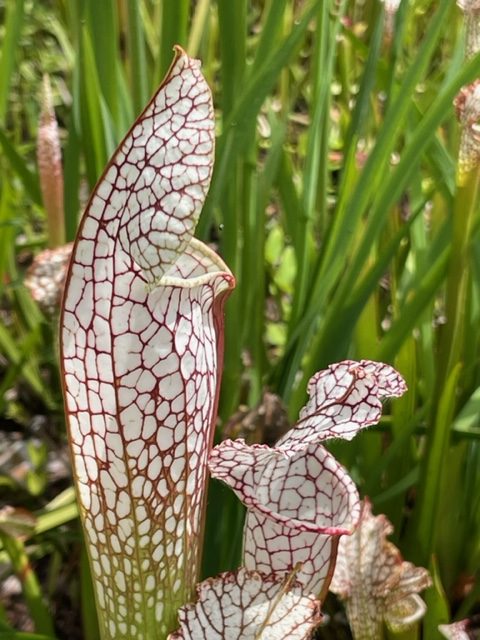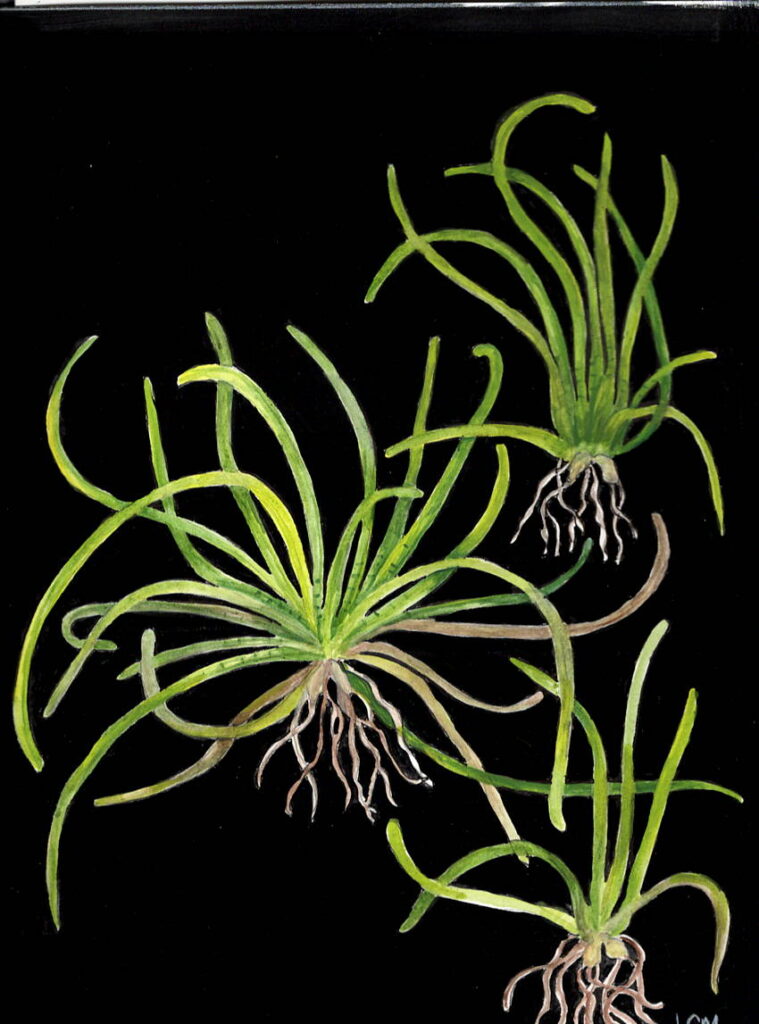For the past year, I’ve been volunteering in the conservation greenhouse at the Atlanta Botanical Garden. My tasks there are like gardening tasks anywhere. Working with a small group of volunteers, we cut back, repot, divide and replant, water, fuss and stew over the plants in our care. What makes this work so incredibly different is that the plants we are working with are among the rarest and most vulnerable plants native to our state. It definitely brings an enhanced level of intensity to mundane tasks but it also brings a great sense of satisfaction. I think, perhaps, there is no more satisfying work than doing something that you know will make a difference. So, our care for the pitcher plants, the threatened sunflowers, the very rare quillworts makes all of us feel that we are making a contribution to save these species for future generations.

The more I “got to know” these plants, the more fascinated I became. I watched them in all phases of their growth cycle during the year and observed them closely. And, what I found is that not only are these plants precious because they are so rare but they are also absolutely beautiful to look.

As an artist, I was determined to both capture and share this beauty so I eventually painted all 19 of the native Georgia plants that are on the federal endangered species list. But as I was painting, I kept wondering, WHY are these endangered? Have they always been rare or is this a new, unfortunate 21st century phenomenon. And, what can we, as concerned citizens, DO about this situation? The scientists are working non – stop but certainly there must be something WE can do. And of course, there is. For some ideas of what you can do to help save these species from extinction, click on How You Can Help.
In the blog posts to follow, I’ll explore some of the many reasons that so many of the plants throughout the country are rare and vulnerable. But for now, understanding the various designations and definitions is a good starting point.
The World Wildlife Fund explains the Endangered Species Act as follows: Passed with bipartisan support in 1973, the law allows individuals and organizations to petition to have a species listed as endangered or threatened. These listing petitions undergo rigorous scientific evaluation and public review before a final decision is made on whether a species should be protected.
Currently there are 1300 species either threatened or endangered on the federal lists. This number fluctuates as new species are listed and (hooray!) other species are successfully restored so that they no longer need protection. What is the difference between the federal designations?
Endangered: any species which is in danger of extinction throughout all or a significant portion of it range.
Threatened: any species which is likely to become an endangered species within the foreseeable future throughout all or a significant portion of its range.
Many, though not all, states have their own lists of Endangered, Threatened and Vulnerable (or Special Concern). A species might be listed as endangered on the state list but not the federal list. For example, the Kentucky lady’s slipper is on the Georgia endangered species list, meaning that in our particular state, it is threatened with extinction. But, it is more secure in other parts of its range in other states so it is NOT listed as endangered on the federal lists.
Global listings are similar but status is based on its presence throughout its range:
G1 – critically imperiled globally
G2 Imperiled
G3 Either very rare throughout its range or factors (such as habitat loss) make it vulnerable to extinction throughout its range.
G4. Globally secure but may be rare or endangered in part of its range
G5 Globally secure throughout.
The Endangered Species Act is a wonderful law but it’s not enough. We need to continue to advocate for stronger laws to protect global biodiversity. I look forward to exploring this important issue with you as we work together to protect our imperiled beauty.
Laura
Note: All those who knew Will Hembree are heartbroken because of his death on July 26th. Will was instrumental in my becoming involved and passionate about our endangered plants and the current exhibit at the Atlanta Botanical Gardens is dedicated to his memory. Will inspired many people in his tragically short life. He will be greatly missed but not forgotten.
